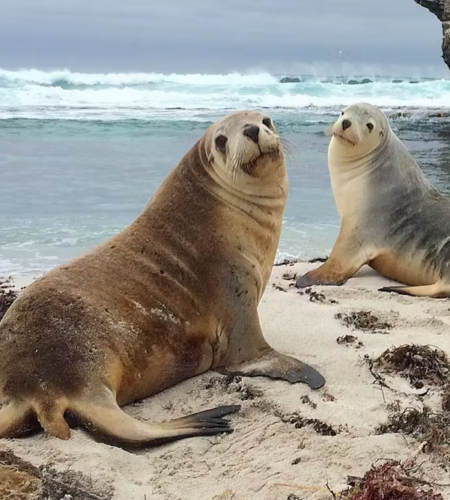In the quest to explore and understand the vast, mysterious depths of the ocean, scientists have traditionally relied on technology like remotely operated vehicles (ROVs) and towed cameras. However, these methods can be expensive, logistically challenging, and limited by weather conditions. Enter Daphne, Phoebe, Iris, and Pasithea—four Australian sea lions equipped with state-of-the-art cameras. A groundbreaking study, recently published in Frontiers in Marine Science, demonstrates how these marine mammals are revolutionizing our understanding of underwater habitats.
Sea Lions as Underwater Explorers
The study, led by Nathan Angelakis from the South Australian Research and Development Institute and the University of Adelaide, introduces an innovative approach to mapping the ocean floor using sea lions. These animals, known for their agility and keen foraging skills, have been outfitted with lightweight cameras and tracking devices. The researchers chose Australian sea lions due to their deep-diving habits and presence on the southern coast of Australia—an area with previously unexplored benthic (seabed) habitats.
The sea lions’ footage reveals an array of underwater landscapes, from lush macroalgae reefs to barren sands and intricate sponge formations. The team analyzed this data and identified six distinct benthic habitats ranging from 5 to 110 meters in depth. These habitats include macroalgae reef, macroalgae meadow, bare sand, sponge/sand, invertebrate reef, and invertebrate boulder habitats. This comprehensive mapping effort provides crucial insights into the diversity and distribution of these habitats.
The Advantages of Animal-Borne Technology
Traditional seabed mapping methods often involve considerable time, personnel, and resources. ROVs and towed cameras, while effective, face limitations in remote and deep marine environments. Sea lions offer a flexible and cost-effective alternative. Their natural behavior and adaptability make them ideal candidates for underwater exploration. Unlike robotic vehicles, which mechanical issues or weather conditions can constrain, sea lions can navigate diverse and challenging environments with ease.
Equipped with cameras and tracking devices, the sea lions dived to depths previously inaccessible to researchers. Their footage provided a firsthand look at underwater ecosystems, capturing scenes of vibrant seaweed meadows, rocky reefs, and even a rare glimpse of a mother sea lion teaching her pup how to hunt. This unique perspective offers valuable data that enhances our understanding of marine life and its habitats.
Innovative Data Analysis and Modeling
The data collected by the sea lions was not only visually stunning but also scientifically significant. The team used 89 hours of footage, combined with GPS data and environmental information such as water temperature and plant matter, to train a machine-learning model. This model, known as Random Forest, was used to predict the distribution of various benthic habitats on the continental shelf.
The results were impressive, with the model achieving over 98% accuracy in predicting habitat locations. This level of precision is a testament to the effectiveness of combining animal-borne video data with advanced computational techniques. The model’s predictions offer new insights into the distribution of macroalgae reefs, bare sands, sponge/sand habitats, and invertebrate reefs—areas that are crucial for marine conservation and management.

Conservation Implications and Future Prospects
The study’s findings have important implications for marine conservation. By providing detailed information on the location and characteristics of benthic habitats, the research helps scientists and conservationists develop more effective strategies for protecting these environments. The use of sea lions also highlights the potential for integrating animal behavior with technological advancements to enhance our understanding of marine ecosystems.
Dr. Dan Costa, a professor of ecology and evolutionary biology at the University of California, Santa Cruz, praised the study for its innovative approach. While researchers have previously used animal-borne cameras to study marine environments, this study represents a novel application of the technique. According to Dr. Costa, the sea lion’s-eye view of the ocean floor could play a crucial role in conservation efforts, helping to manage and protect marine habitats more effectively.
The successful deployment of sea lions as underwater explorers marks a significant advancement in marine science. By leveraging the natural behaviors and diving capabilities of these animals, researchers have uncovered new details about the ocean’s depths that were previously beyond reach. This approach not only complements traditional methods but also offers a more dynamic and cost-effective means of studying underwater habitats.
As our understanding of marine ecosystems continues to grow, innovative methods like this one will play a crucial role in preserving and protecting the ocean’s diverse environments. For more details on this groundbreaking study, you can read the full article in Frontiers in Marine Science.


